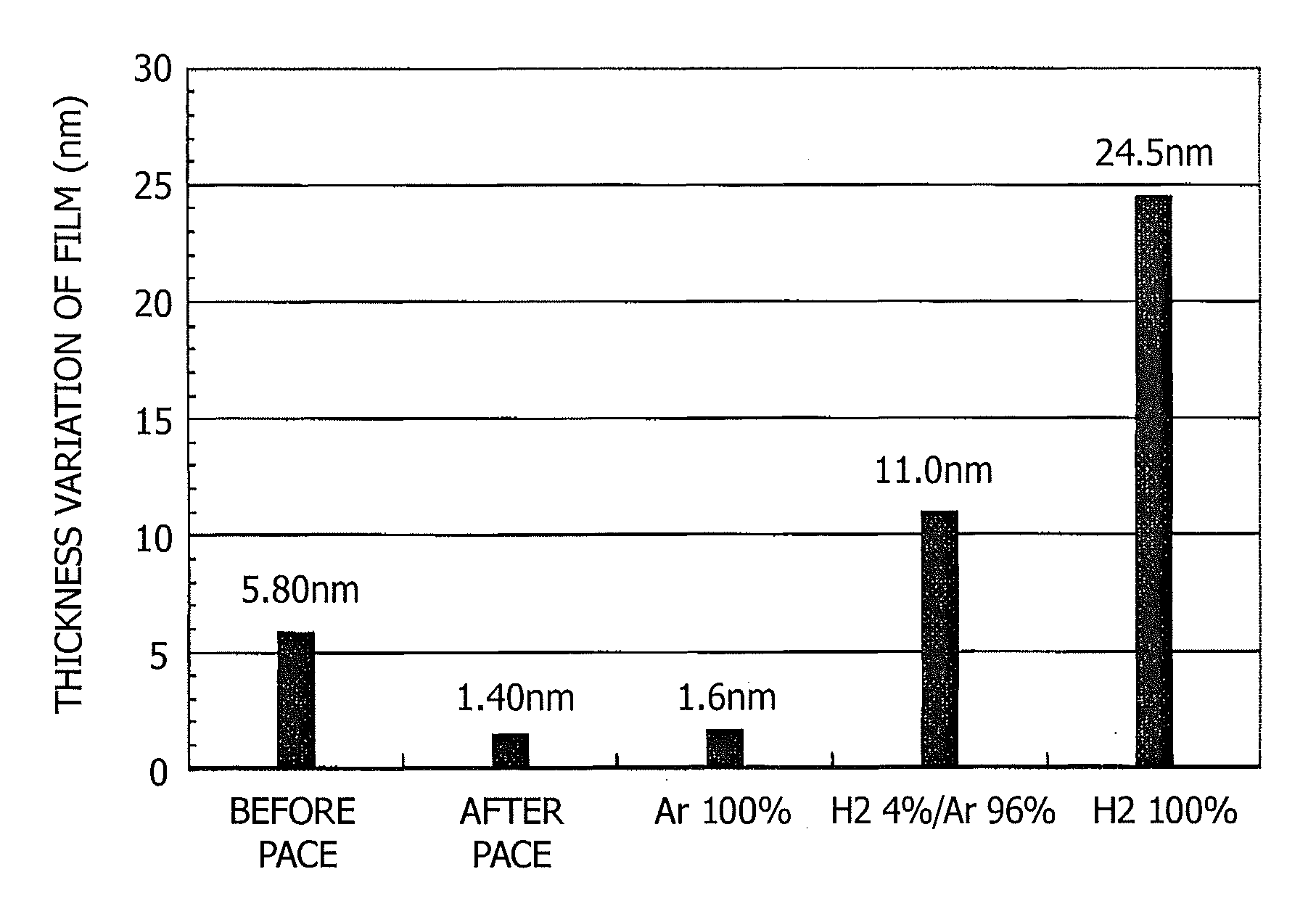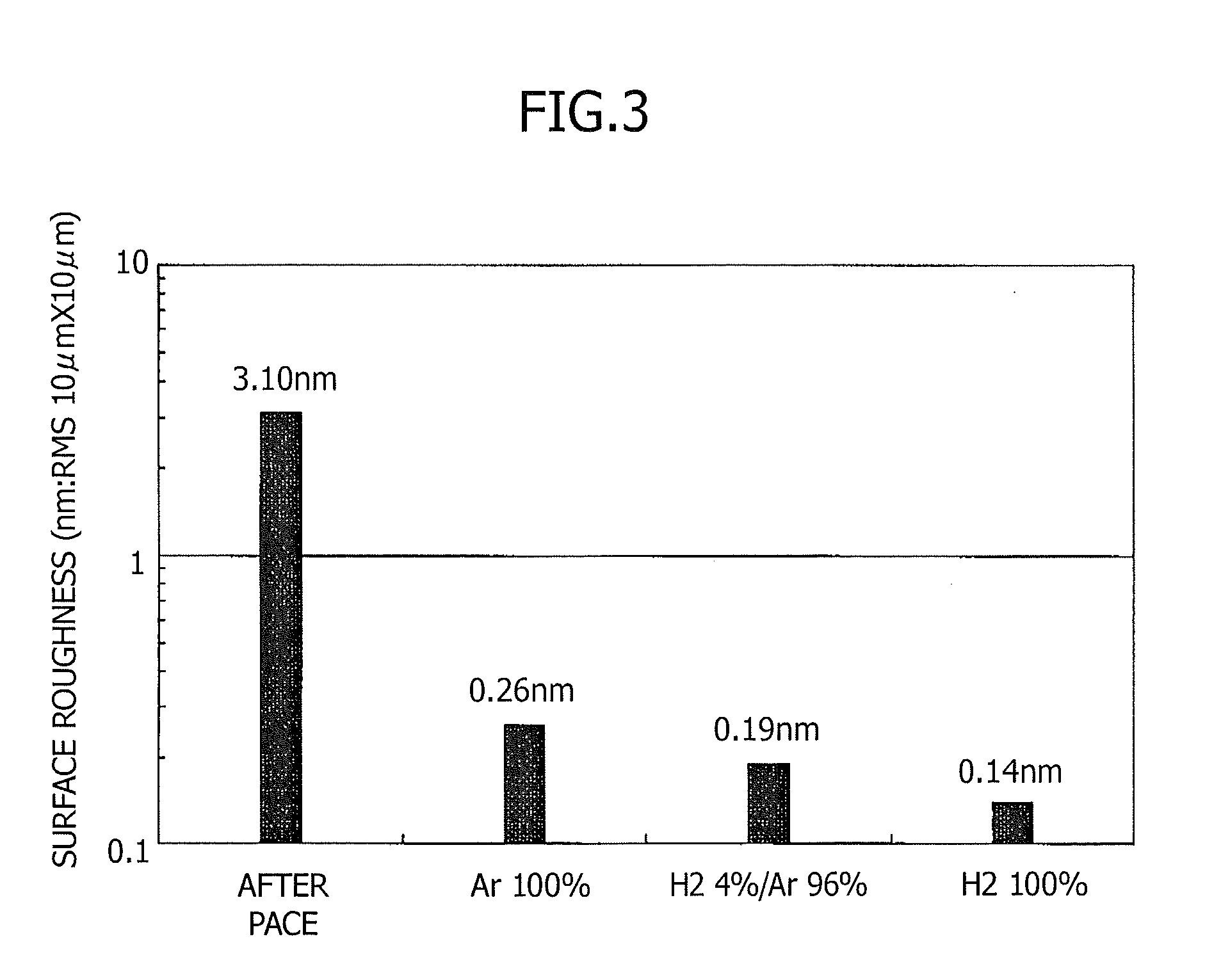Method for treating surface of soi substrate
a technology of soi substrate and surface treatment, which is applied in the direction of basic electric elements, electrical equipment, semiconductor devices, etc., can solve the problems of difficult improvement, difficult to achieve nanometer-scale accuracy with a high yield, and methods with disadvantages, so as to suppress the action of etching and enhance the uniformity of film thickness. , the effect of suppressing the variation of the film thickness of the soi substra
- Summary
- Abstract
- Description
- Claims
- Application Information
AI Technical Summary
Benefits of technology
Problems solved by technology
Method used
Image
Examples
example 1
[0054]A SOI substrate was produced as follows in accordance with the method for producing a SOI substrate according to the bonding method.
[0055]First, a SOI substrate was prepared by the SiGen method (step a).
[0056]In this step, a silicon wafer with an ion-implanted region formed by implanting hydrogen ions under the implantation conditions: an implantation energy of 35 keV; an implantation dose of 9×1016 / cm2; and an implantation depth of 0.3 μm was prepared as a donor wafer, whereas a synthetic quartz substrate was prepared as a handle wafer, and the surfaces to be attached were subjected to a high-frequency plasma activation treatment for 10 seconds, by using a nitrogen gas as a gas for plasma and applying a high frequency between parallel plate electrodes under the condition of high-frequency power of 50 W to generate a plasma.
[0057]Next, the donor wafer and the handle wafer were laminated, and the laminate was subjected to a heat treatment at 350° C. to increase the bond streng...
example 2
[0066]This example was implemented in the same way as in Example 1, provided that the anneal step (step c) was carried out in argon atmosphere containing 4 vol % of hydrogen. In this case, the decrease in film thickness (etching amount) for the SOI substrate was 16 nm, the surface roughness was 0.19 nm in terms of RMS, and the in-plane thickness variation of film was 11.0 nm.
[0067]As described above, the surface roughness of the SOI substrate was also RMS 0.3 nm or less in the case of the annealing in the argon atmosphere containing 4 vol % of hydrogen.
PUM
| Property | Measurement | Unit |
|---|---|---|
| temperature | aaaaa | aaaaa |
| surface roughness | aaaaa | aaaaa |
| surface roughness | aaaaa | aaaaa |
Abstract
Description
Claims
Application Information
 Login to View More
Login to View More - R&D
- Intellectual Property
- Life Sciences
- Materials
- Tech Scout
- Unparalleled Data Quality
- Higher Quality Content
- 60% Fewer Hallucinations
Browse by: Latest US Patents, China's latest patents, Technical Efficacy Thesaurus, Application Domain, Technology Topic, Popular Technical Reports.
© 2025 PatSnap. All rights reserved.Legal|Privacy policy|Modern Slavery Act Transparency Statement|Sitemap|About US| Contact US: help@patsnap.com



